Spider phylosymbiosis: divergence of widow spider species and their tissues' microbiomes, BMC Ecology and Evolution
Por um escritor misterioso
Last updated 31 março 2025
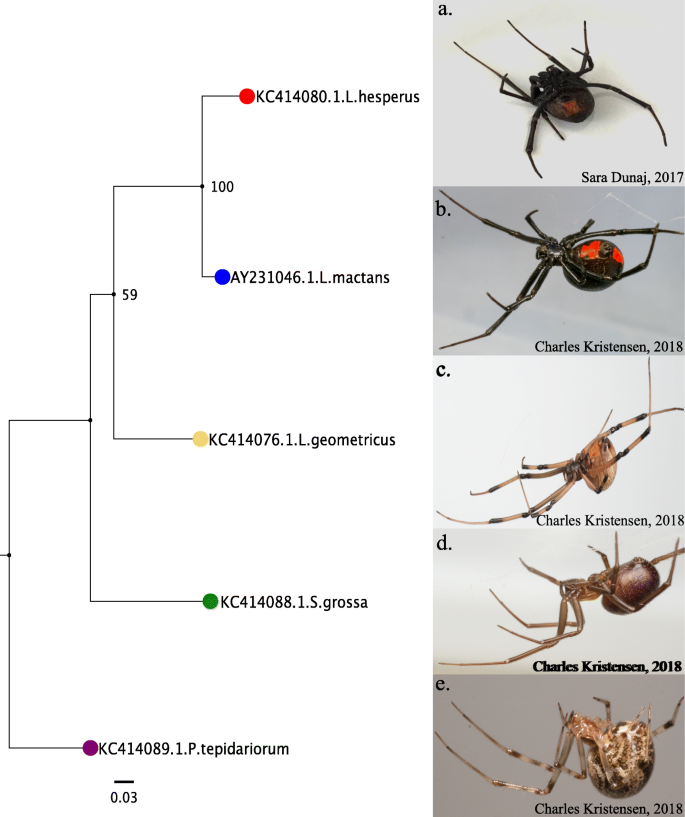
Background Microbiomes can have profound impacts on host biology and evolution, but to date, remain vastly understudied in spiders despite their unique and diverse predatory adaptations. This study evaluates closely related species of spiders and their host-microbe relationships in the context of phylosymbiosis, an eco-evolutionary pattern where the microbial community profile parallels the phylogeny of closely related host species. Using 16S rRNA gene amplicon sequencing, we characterized the microbiomes of five species with known phylogenetic relationships from the family Theridiidae, including multiple closely related widow spiders (L. hesperus, L. mactans, L. geometricus, S. grossa, and P. tepidariorum). Results We compared whole animal and tissue-specific microbiomes (cephalothorax, fat bodies, venom glands, silk glands, and ovary) in the five species to better understand the relationship between spiders and their microbial symbionts. This showed a strong congruence of the microbiome beta-diversity of the whole spiders, cephalothorax, venom glands, and silk glands when compared to their host phylogeny. Our results support phylosymbiosis in these species and across their specialized tissues. The ovary tissue microbial dendrograms also parallel the widow phylogeny, suggesting vertical transfer of species-specific bacterial symbionts. By cross-validating with RNA sequencing data obtained from the venom glands, silk glands and ovaries of L. hesperus, L. geometricus, S. grossa, and P. tepidariorum we confirmed that several microbial symbionts of interest are viably active in the host. Conclusion Together these results provide evidence that supports the importance of host-microbe interactions and the significant role microbial communities may play in the evolution and adaptation of their hosts.

Species-specific but not phylosymbiotic gut microbiomes of New Guinean passerine birds are shaped by diet and flight-associated gut modifications

Hierarchical clustering of the bacterial communities from the cuticle

Spider phylosymbiosis: divergence of widow spider species and their tissues' microbiomes. - Abstract - Europe PMC

Species-specific but not phylosymbiotic gut microbiomes of New Guinean passerine birds are shaped by diet and flight-associated gut modifications
Parasites of spiders: Their impacts on host behavior and ecology. - Document - Gale Academic OneFile

House spider genome uncovers evolutionary shifts in the diversity and expression of black widow venom proteins associated with extreme toxicity, BMC Genomics

PDF) Differing Dietary Nutrients and Diet-Associated Bacteria Has Limited Impact on Spider Gut Microbiota Composition

Species-specific but not phylosymbiotic gut microbiomes of New Guinean passerine birds are shaped by diet and flight-associated gut modifications

Species-specific but not phylosymbiotic gut microbiomes of New Guinean passerine birds are shaped by diet and flight-associated gut modifications

Microorganisms, Free Full-Text

Species-specific but not phylosymbiotic gut microbiomes of New Guinean passerine birds are shaped by diet and flight-associated gut modifications

Phylogenomics Resolves a Spider Backbone Phylogeny and Rejects a Prevailing Paradigm for Orb Web Evolution - ScienceDirect

Genomes of Gut Bacteria from Nasonia Wasps Shed Light on Phylosymbiosis and Microbe-Assisted Hybrid Breakdown
Recomendado para você
-
 Spider - Wikipedia31 março 2025
Spider - Wikipedia31 março 2025 -
 Collection Different Species Spiders Colour Image Stock Vector (Royalty Free) 1536964073, Shutterstock31 março 2025
Collection Different Species Spiders Colour Image Stock Vector (Royalty Free) 1536964073, Shutterstock31 março 2025 -
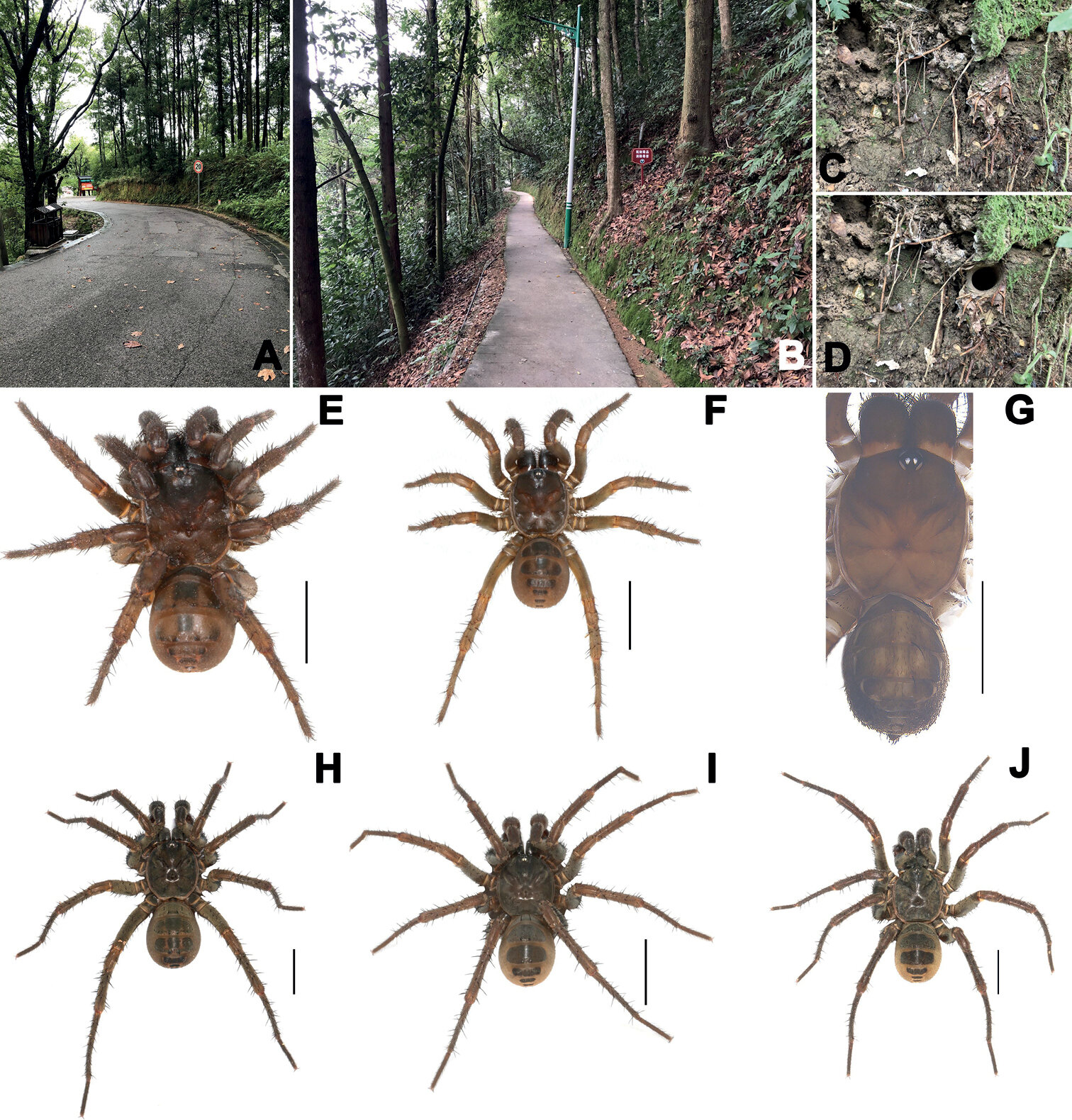 Three new species of mesothelean spiders discovered in China31 março 2025
Three new species of mesothelean spiders discovered in China31 março 2025 -
Seven new species of Australia's colourful 'dancing' peacock spider discovered - ABC News31 março 2025
-
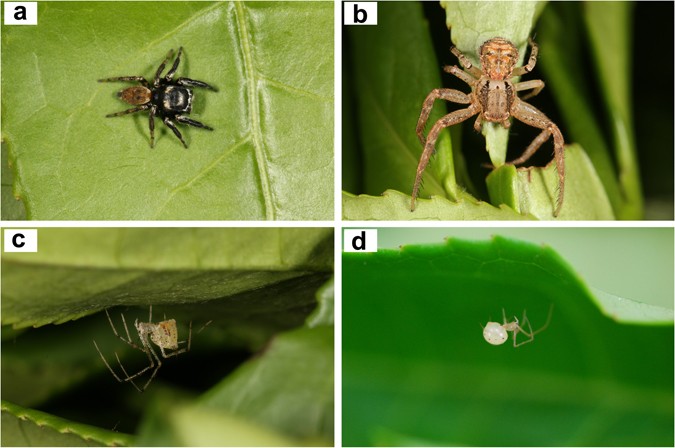 Molecular identification of spiders preying on Empoasca vitis in a tea plantation31 março 2025
Molecular identification of spiders preying on Empoasca vitis in a tea plantation31 março 2025 -
Rare and giant' trapdoor spider species, Euoplos dignitas, discovered in Brigalow Belt - ABC News31 março 2025
-
 Large Invasive Spider Species Growing in 'Extreme Numbers' in Georgia31 março 2025
Large Invasive Spider Species Growing in 'Extreme Numbers' in Georgia31 março 2025 -
 Two Amazingly Tiny Spider Species Found in China31 março 2025
Two Amazingly Tiny Spider Species Found in China31 março 2025 -
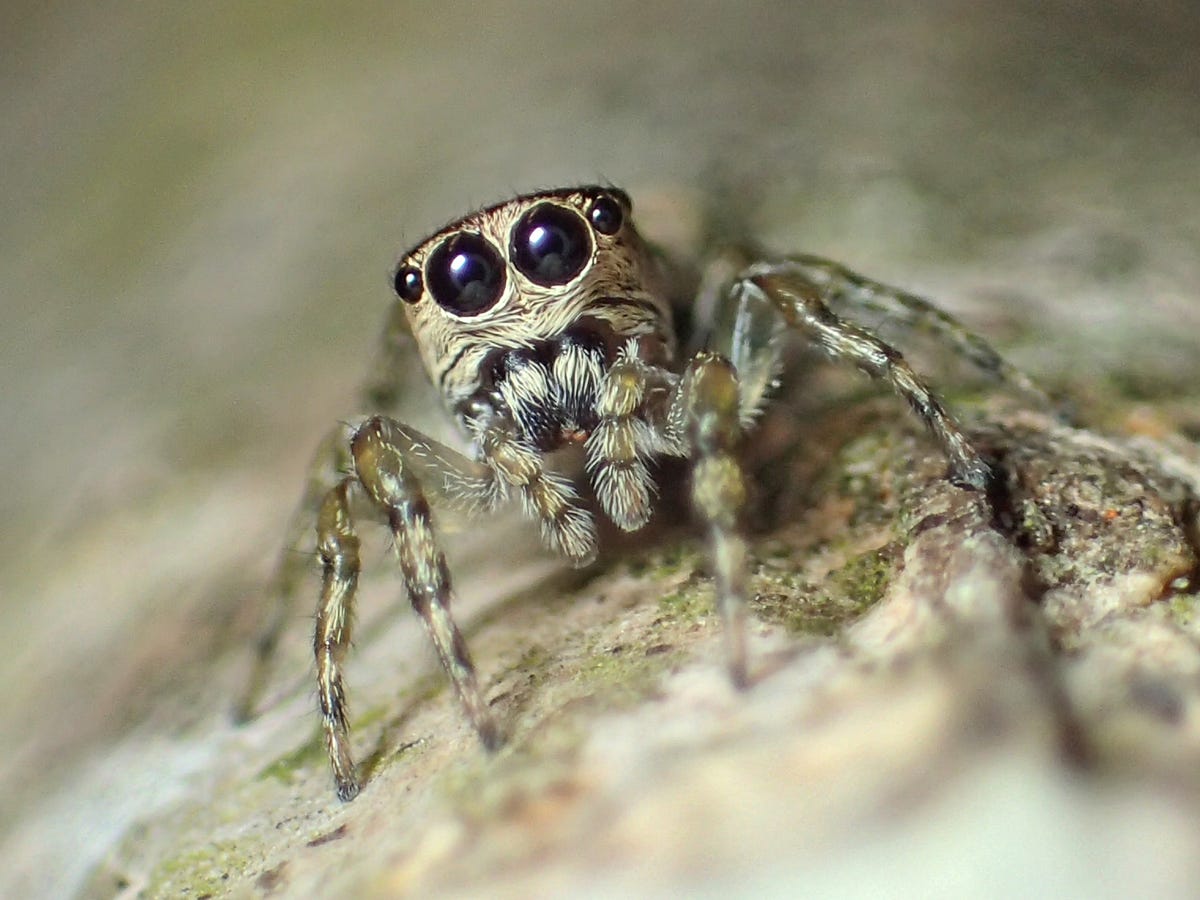 Scientists Say 50,000 Spider Species Have Now Been Discovered - CNET31 março 2025
Scientists Say 50,000 Spider Species Have Now Been Discovered - CNET31 março 2025 -
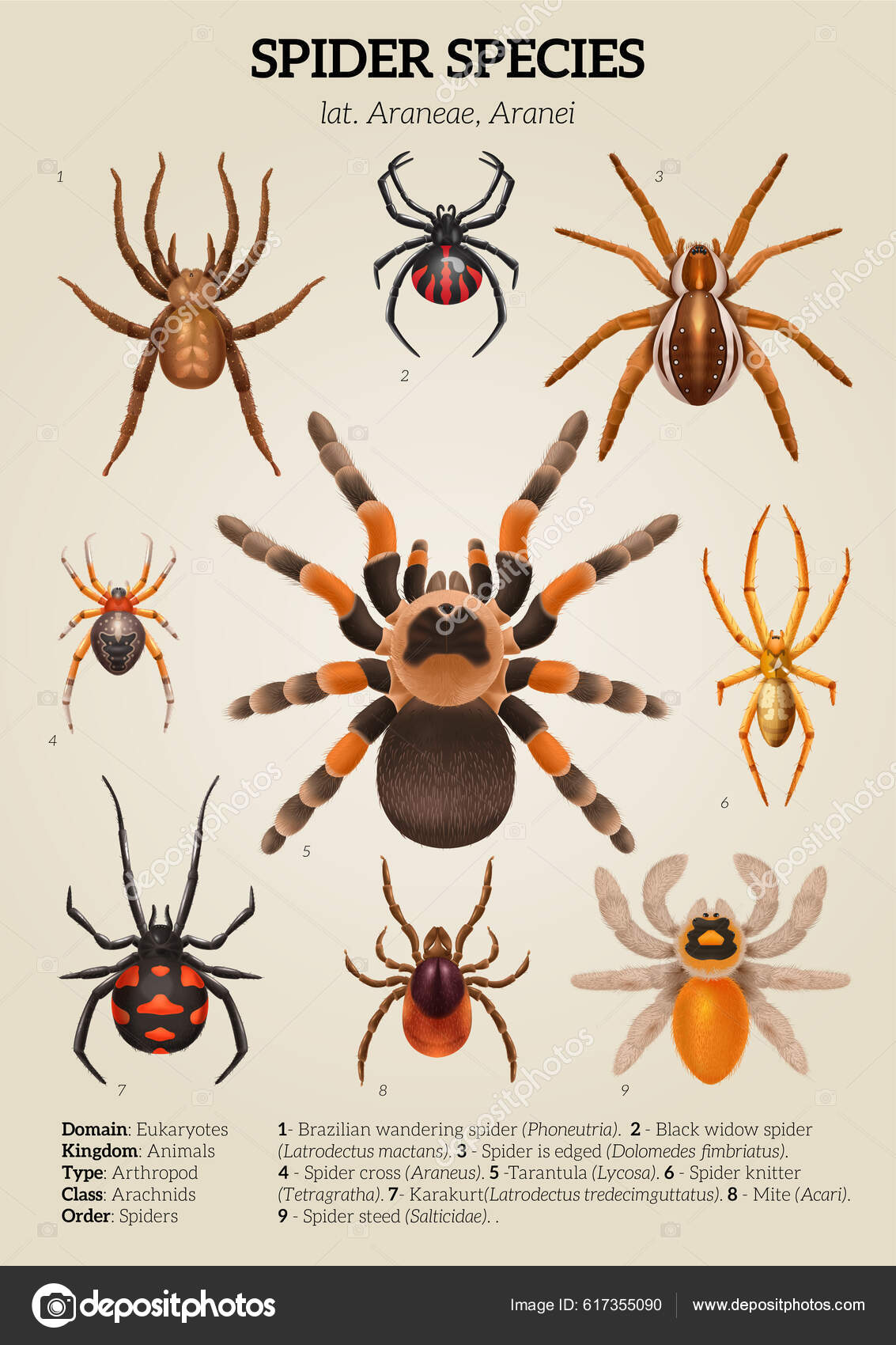 Realistic Spiders Diagram Colored Composition Spider Species Description Them Vector Stock Vector by ©macrovector 61735509031 março 2025
Realistic Spiders Diagram Colored Composition Spider Species Description Them Vector Stock Vector by ©macrovector 61735509031 março 2025
você pode gostar
-
 Outros Piercings - Sobrancelha - 4SOB06 - Piercing Mania31 março 2025
Outros Piercings - Sobrancelha - 4SOB06 - Piercing Mania31 março 2025 -
![Mortal Kombat 4 Hardcore attack v0.9 [PSX] - Mortal Kombat Secrets](https://www.romhacking.net/hacks/psx/images/2288screenshot4.png) Mortal Kombat 4 Hardcore attack v0.9 [PSX] - Mortal Kombat Secrets31 março 2025
Mortal Kombat 4 Hardcore attack v0.9 [PSX] - Mortal Kombat Secrets31 março 2025 -
 Yu-Gi-Oh! 5D's Season 2 Opening Theme Hyper Drive - Road to31 março 2025
Yu-Gi-Oh! 5D's Season 2 Opening Theme Hyper Drive - Road to31 março 2025 -
 50 Glorious Cooking Memes To Make The Chefs In Your Life Nod In Approval31 março 2025
50 Glorious Cooking Memes To Make The Chefs In Your Life Nod In Approval31 março 2025 -
Tabuleiro Dama em Oferta31 março 2025
-
 Orlando Outlets Find Shopping Discounts on Designer Brands31 março 2025
Orlando Outlets Find Shopping Discounts on Designer Brands31 março 2025 -
 Free download, Computer Arrow, Sword, Emoji, Emoticon, Sms, Cold Weapon transparent background PNG clipart31 março 2025
Free download, Computer Arrow, Sword, Emoji, Emoticon, Sms, Cold Weapon transparent background PNG clipart31 março 2025 -
 I recently noclipped into the backrooms and was having a hard time until one of these guys saved me. They brought me back to their level and it's always a party there!31 março 2025
I recently noclipped into the backrooms and was having a hard time until one of these guys saved me. They brought me back to their level and it's always a party there!31 março 2025 -
 Valkyrie Drive - Charlotte 1 » Anime Xis31 março 2025
Valkyrie Drive - Charlotte 1 » Anime Xis31 março 2025 -
 Sanei All Star Collection 6 Inch Plush - Shaymin (Sky Forme) PP220 – Collectors Emporium NY31 março 2025
Sanei All Star Collection 6 Inch Plush - Shaymin (Sky Forme) PP220 – Collectors Emporium NY31 março 2025
